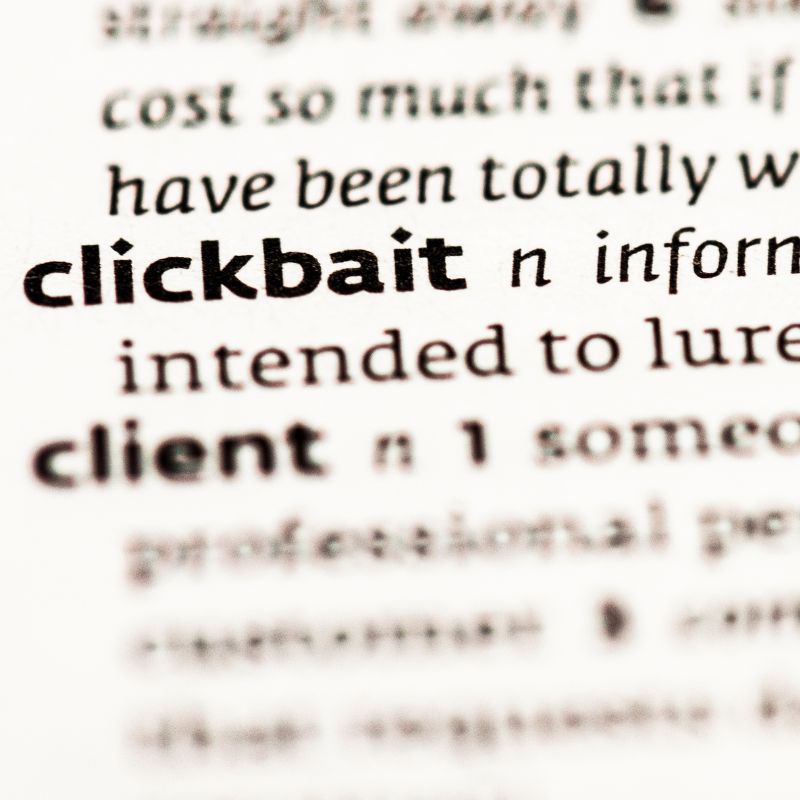Do you want to grab the attention of your readers and boost your website traffic? You may be familiar with the concept of “clickbait.” Clickbait is a type of content that promises to deliver something exciting but doesn’t always live up to its promise. Though it has grown in popularity over recent years, there are some important things you should consider before using clickbait for content marketing.
Defining clickbait—what it is and why people use it
Essentially, clickbait is a sensationalistic headline or image that is designed to lure readers or viewers into clicking on a link. It’s a form of digital bait and switch, where the content promised in the clickbait rarely lives up to the hype. So why do people use it? The answer is simple: clicks equal revenue. Websites and social media platforms rely on clicks and engagement to generate ad revenue, which is why clickbait can be so effective in driving traffic. However, when used in excess, it can also be harmful to the journalistic integrity of online media and the trustworthiness of its sources.
Identifying clickbait headlines—how to spot them
In today’s era of constant online interaction, we’re all no strangers to the temptation of clickbait headlines. They’re everywhere, from social media to news websites, promising to be the juiciest, most exciting, or most shocking stories we’ve ever read. Fortunately, there are several ways to spot these headlines and avoid being led down a rabbit hole of shallow content. If you’ve ever wondered how to protect yourself from clickbait, keep reading and learn how to identify it like a pro!
Examining the pros and cons of using clickbait
Proponents of clickbait argue that it is a valuable marketing tool that captures people’s attention and drives traffic to websites. Clickbait often misleads readers with false or exaggerated headlines, which can damage a brand’s reputation. Furthermore, studies show that clickbait often results in high bounce rates, meaning that visitors quickly leave a website after realizing the content is not what they expected. While the technique is tempting for businesses looking to boost revenue, it’s essential to consider the damaging effects it can have on a brand’s credibility and reputation.
Analyzing how clickbait affects your audience
Clickbait can be a powerful tool to grab attention and entice readers to click on articles or videos. However, its effects on the audience can be both positive and negative. On one hand, clickbait titles can provide consumers with a fun and exciting experience and potentially lead them to discover new content they may have never found otherwise. On the other hand, clickbait can manipulate viewers into clicking on a shallow or meaningless article or video, leaving them feeling disappointed and unsatisfied. It’s essential to consider how clickbait affects your audience before implementing it as a strategy, as it can ultimately shape their perception of your brand or content.
Creating engaging content without using clickbait tactics
Clickbait tactics may get clicks, but they often leave readers feeling unsatisfied and manipulated. One better approach is to focus on providing real value to your audience by offering helpful tips, insight, or advice. Another is to tap into emotions and storytelling, crafting content that resonates with readers on a personal level. By taking a thoughtful and strategic approach to your content creation, you can build a loyal following that truly connects with your message.
Best practices for avoiding clickbait on social media
It’s no secret that social media is full of clickbait, those tantalizing headlines that are carefully crafted to get you to click through to a website. While some clickbait may be harmless, many are designed to lead you to low-quality content or worse, malware. One best practice is to carefully scrutinize an article’s headlines and descriptive text before clicking through. If the headline seems too sensational or unbelievable, it probably is. Additionally, you can use ad blockers or browser extensions that block clickbait links altogether. By following these best practices, you can browse social media without fear of falling for clickbait.
Clickbait might be a common occurrence on the internet, but it shouldn’t be your go-to for creating engaging content. There are plenty of other ways to captivate and reach an audience on social media without relying on clickbait tactics. Crafting enticing titles that provide value to your readers is key, as well as making sure you know what sets your brand apart from others. If you find yourself needing help with improving clickbait-free engagement with your audience, consider reaching out to professionals like Elite Editing who can assist in strategizing and developing more meaningful tactics for connecting with potential followers. Let’s start shifting the narrative away from clickbait and toward quality content that engages users and makes them want to come back for more!








